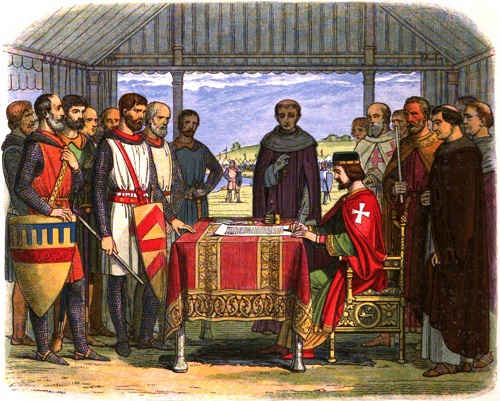Magna Carta 1215 Full English Translation
The Magna Carta was written in 1215 in a language that would make no sense in this day and age. However, there is a modern day English translation, see the details below. Although at the time, this fine document or agreement between the unpopular King John and the people would have been applicable, just how much is it worth to us today?
We need to ask question, because even some of our politicians have cited the Magna Carta.
Also, Lord Denning described it as “the greatest constitutional document of all times”.

King John signs the Magna Carta
Legislation Or Not?
By and large, many people in the Freedom Movement will often refer to the Magna Carta. Furthermore, many say that nobody can change the meaning of it under any circumstances. Additionally, they insist that no ‘laws‘ passed in parliament should come above the document. They argue that those made by parliament are just legislation and therefore only have the force of law with the consent of the governed. Whereas the Magna Carta was drawn up under common law and common law is the law of the land.
While the document is old, many American and British legal communities speak about it with much respect. This is because it identifies a lot of freedoms once offered to normal folk but also to others communities like the church.
In fact, here is a video with a narrative. In other words, it has speech for convenience.
The Document Begins Like This:
JOHN, by the grace of God, King of England, Lord of Ireland, Duke of Normandy and Aquitaine, and Count of Anjou, to his archbishops, bishops, abbots, earls, barons, justices, foresters, sheriffs, stewards, servants, and to all his officials and loyal subjects, Greeting.
Finally, the full-text English translation of the Magna Carta is here.
